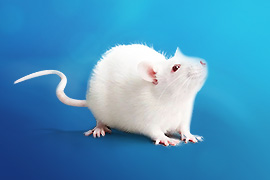The company's factory building covers an area of approximately 20,000 square meters and has a high-level experimental animal barrier system and isolation packaging production site. There are currently air conditioning units, refrigeration units, and other equipment. All equipment and facilities within the company are independently maintained and serviced by the company. The company has independently completed the design, construction, and decoration of its own testing laboratory and technology center, including the internal communication control system, which can meet various experimental activities such as bacterial culture and detection, virus detection, parasite detection, feed and water detection, and environmental detection. Currently, the company can independently complete the design and construction of laboratories according to customer needs, and provide maintenance services for equipment related to experimental animals.
|
Project |
Implementation period |
Consumables |
|
Replacement and maintenance of fresh air filter |
Once a week, twice during willow catkin season |
Three sets of fresh air rate nets |
|
Replacement and maintenance of primary filter |
Once a week |
8 sets (5 per set) |
|
Maintenance of electrode humidifier, cleaning of humidification bucket |
Once a week from October to May of the following year, once a month for the rest of the year |
|
|
Cleaning of exhaust filter screen inside the barrier |
Once a month |
|
|
Maintenance of facilities within the barrier (lighting, door locks, sealing strips) |
Once a month/when damage occurs |
Real-time replacement when wear and tear occurs |
|
Air conditioning system electric heating detection |
Once a month |
|
|
Add special salt for water softener to disinfect animal drinking water system in a timely manner |
Disinfect once a month and add salt once a week |
|
|
Maintenance and upkeep of air conditioning supply and exhaust fan motor |
Once a month |
|
|
Seal clamping layer pipes and rooms with glue |
Monthly inspection, repair at any time |
|
|
Self-control sensor calibration and recording |
Once a month |
|
|
Maintenance of high-pressure sterilizer |
Once a month |
|
|
Maintenance and balance detection of compressor current for direct expansion machine |
Once a month from November to March of the following year, and once every half month for the rest of the months |
|
|
Cleaning of air conditioning condensate pipe |
Once a month |
|
|
Trial operation of standby air conditioning unit |
Once a month |
|
|
Replace the medium-efficiency filter |
Replace a set every 6 weeks |
9 sets (5 per set) |
|
Collect water samples from the animal drinking fountain and send them to a third-party for testing |
Once every quarter, meet drinking water standards and be sterile. |
|
|
Clean the surface of the monitoring camera. |
Once every quarter. |
|
|
Dust removal and insulation testing for distribution boxes and automatic control boxes. |
Once every quarter. |
|
|
Barrier system environment self-check and issue self-check report |
Once every quarter |
|
|
Calibration of self-control valves and actuator computers |
Once every quarter |
|
|
Rust removal and maintenance of valves in water supply and drainage system pipelines |
Once per quarter |
|
|
Replacement and disinfection of animal drinking water system filter |
Once per quarter |
|
|
Replacement of sub-high efficiency filter |
Once every six months |
2 sets (5 pieces/set) |
|
Annual replacement of UV lamp tube |
Once a year |
10 pieces of 40w, 6 pieces of 30w, 6 pieces of 20w |
|
Exhaust medium efficiency filter |
Once a year |
1 set (5 pieces/set) |
|
Exhaust activated carbon filter |
Once a year |
300 kilograms |
|
Efficient filter |
Once a year/environmental inspection reveals problems |
|
|
Mosquito and fly killing lamp tube |
|
|
|
Cleaning of mosquito and fly killing lamp |
|
|
|
Replacement of lamp tube for transfer window and transfer cabinet |
|
|
|
Personnel on-site operation and maintenance check once a week |
|
|
|
Agent transportation |
|
|
-
 Wistar RatDeveloped by the Wistar Institute in the United States in 1907. In 2019, SpePharm (Beijing) Biotechnology Co., Ltd. introduced breeding from the National Rodent Laboratory Animal Seed Center.More
Wistar RatDeveloped by the Wistar Institute in the United States in 1907. In 2019, SpePharm (Beijing) Biotechnology Co., Ltd. introduced breeding from the National Rodent Laboratory Animal Seed Center.More -
 ICR miceIn 1926, the Rockfeller Institute of the United States introduced albino mouse from Switzerland to breed Swiss mouse; in 1948, it was introduced by the Philadelphia Cancer Institute and bred Ha/ICR. In 1973, it was introduced into China and in 2011, SPF (Beijing) Biotechnology Co., Ltd. introduced it from the National Rodent Experimental Animal Seed Center and bred it.More
ICR miceIn 1926, the Rockfeller Institute of the United States introduced albino mouse from Switzerland to breed Swiss mouse; in 1948, it was introduced by the Philadelphia Cancer Institute and bred Ha/ICR. In 1973, it was introduced into China and in 2011, SPF (Beijing) Biotechnology Co., Ltd. introduced it from the National Rodent Experimental Animal Seed Center and bred it.More








